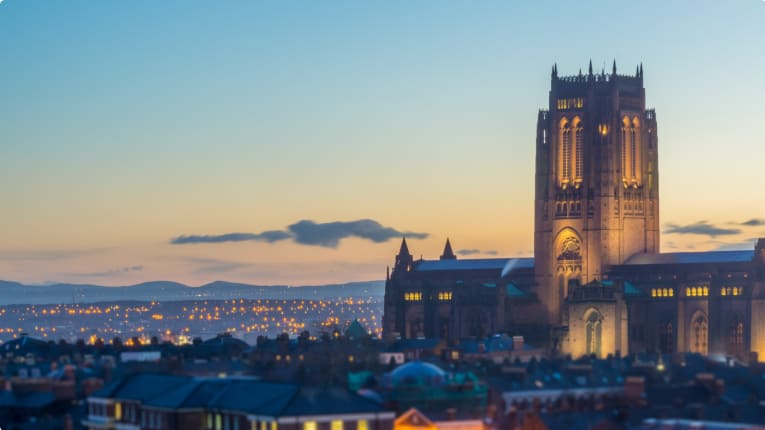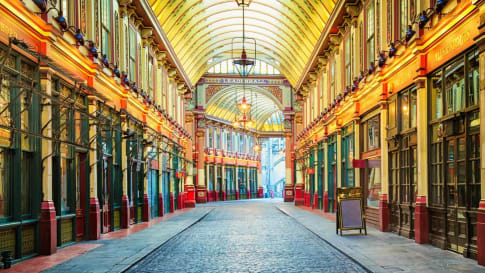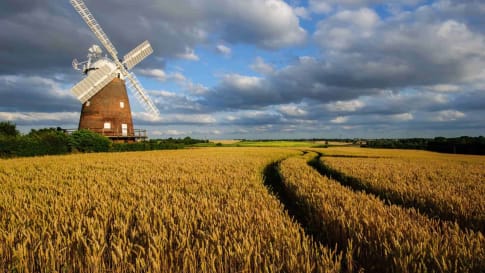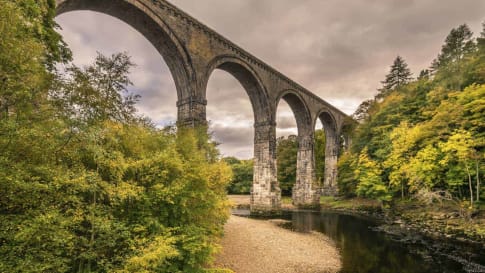Liverpool Cathedral
Liverpool Cathedral, United Kingdom Liverpool Anglican Cathedral, located on St James Road, Liverpool, is the biggest church in England and the eighth largest cathedral in the world, towering over the city skyline. It has the…
21 Dec 23 · 6 mins read

Liverpool Cathedral, United Kingdom
Liverpool Anglican Cathedral, located on St James Road, Liverpool, is the biggest church in England and the eighth largest cathedral in the world, towering over the city skyline. It has the world’s tallest tower at 101 metres, offering panoramic views over the river Mersey, and with a total external length of 189 metres, it is also one of the world’s longest cathedrals. Construction of the cathedral began in 1904 based on the design of Giles Gilbert Scott, grandson of the great Sir George Gilbert Scott. Scott’s design then altered significantly over the course of its construction, until finally it was finished in 1978. Today the great building is medieval in appearance and extravagance.
This article explores the history and architecture of Liverpool Cathedral as background reading for Odyssey Traveller’s tours to England. We view Liverpool Cathedral during our 21-day Liverpool, Newcastle, Glasgow Tour. Other English cathedrals are also explored as part of our 22-day Seven Ages of Britain Tour, as well as our 22-day Medieval England Tour. These tours are designed for senior and mature travellers who would like to learn about history and culture with like-minded people in a small group setting (participant number is typically 6 to 12), using the knowledge and expertise of our tour leader and local guides.
For more information readers are urged to take a look at Simon Jenkin’s book England’s Cathedrals, which was used in the writing of this article.

History of Liverpool Cathedral
The decision to construct a cathedral in Liverpool occurred following the creation of the new Anglican Diocese for Liverpool in 1880, covering the city and surrounding regions. At first, the existing parish church of St. Peter served as a pro-cathedral, but it was far too small to adequately serve the task. The location chosen for a new cathedral, however, was challenging – a rocky quarry high above the River Mersey opposite the Georgian quarter around Rodney St. As a result, the building’s alignment had to be north-south rather than east-west.
In order to find an architect to design and construct the new cathedral, the city held a competition in from 1901 to 1903. The competition judges were advised by two titans of late-Victorian architecture, R. Norman Shaw and G. F. Bodley. Scouring through the anonymous designs, the committee rejected more than 100 entries, before ultimately deciding who would win the contract. The winner, as it turned out, was the 22-year-old student Giles Gilbert Scott.
Scott was from a famous dynasty of ecclesiastical architects, and himself would later design important works such as the Battersea Power Station in London and the red telephone boxes so typical of Great Britain. However, at this point, he had built nothing to his own designs. Somewhat ironically too, although this would be an Anglican cathedral, he was a Roman Catholic.
Due to Scott’s inexperience, the committee appointed Bodley to work alongside him as joint architect. Bodley at that point was involved in the design of several cathedrals, including notably the National Cathedral in Washington, D.C. The foundation stone was laid by King Edward VII in 1904, and work was underway. Scott failed to get along with Bodley, however, clashing with his design approach, and was on the verge of retiring when the latter suddenly died in 1907.
Work continued and three years later, in 1910, the first part of the building, the Lady Chapel, was consecrated and opened. By this point, however, Scott had become unsatisfied with his original design for the main body of the cathedral and managed to convince the committee to accept a completely revised one. Whereas his original design had two towers at the west end and a single transept, these were replaced by a single monumental tower in the centre of a symmetrical plan, flanked by twin transepts. The new plan also provided more interior space, and introduced a more modern, monumental decorative style, as opposed to the Gothic detailing of the original.
Work proceeded under the new plan from east to west. Construction was interrupted by two world wars, and Scott continued to make refinements to his plan until his death in 1960. Then finally, Liverpool Cathedral was completed, and opened by Queen Elizabeth II, in 1978.

Architecture
Liverpool Cathedral is a striking example of the English Gothic form. The exterior is massive, composed of chancel, transepts, buttressed walls and pinnacles. The tower dominates the Liverpool skyline and is visible from the Peak District in the southeast round to Wales in the south-west. All is constructed with load-bearing bricks and hand-worked red sandstone laid in lime mortar, using techniques to allow the structure to last for prosperity.
Inside are all the features of a gothic church, fluted piers, lierne vaults and Decorated windows, exaggerated to the brink of excess. As Scott’s plan evolved, it discarded a traditional nave and instead created a so-called Great Space, separating two equal transepts in the heart of the building. To the west of the western transept is a stately bridge, looking over the Great Space and west to where the nave should be, into a sunken well of just two bays. This Dulverton Bridge floats in air, offering exhilarating views of the interior.

Above all, the great cathedral is a celebration of arches, some round, some pointed, some low, some impossibly high. These arches are the largest Gothic arches every built. The bell work is another special feature. Consisting of 13 bells, they have a total weight of 16.8 tons and hang at a height of 67 metres. This makes it the world’s heaviest and highest ringing pearl of bells.
In the west wall, meanwhile, Scott inserted triple-lancet windows depicting the Benediction, with 200,000 pieces of glass crafted by Carl Edwards. To the east, the sanctuary reredos is massive, gilded, and Perpendicular in style. And the choir is spacious, with mural paintings over stalls of an Arthurian grandeur. The font of French marble has an apostle carved in relief on each of its twelve sides.
Sculptures are also integrated masterfully into the cathedral, carefully conceived in a narrative structure. Some harmonize perfectly with ancient art treasures: the modern figure of a young Christ, for instance, keeps company with the 15th century Madonna by Giovanni della Robbia in the Lady Chapel. The chapel’s décor also features a stained-glass mosaic featuring women of various background and professions who have contributed significantly to society.

Tour of Liverpool Cathedral
Odyssey Traveller conducts a tour of Liverpool Cathedral during our 21-day Liverpool, Newcastle, Glasgow Tour. This small group educational program typically spends one week in self-catering apartments in the city centre of these locations, where we will be accompanied by an Odyssey Program Leader and local tour guides to get to our destinations.
On our small group tours Liverpool England commences the program, a city with more historic building than any other metropolis outside of London. Liverpool city is home to the most expensive book and the largest brick building with some 27 million bricks used to build the Tobacco warehouse in 1901. Though Liverpool is not the largest city in Britain, it is certainly colourful with a cosmopolitan vibe reflected in our visits to Levers Brothers creation of Port Sunlight to the Beatles. A very interesting city built around its port, the history of this city begins here and radiates out. There is unfortunately a dark side as well, the slave trade, which Odyssey Travellers will also learn about.
From Liverpool, our tour goes on to explore the equally great cities of Newcastle and Glasgow.
Liverpool Cathedral is not the only England cathedral you can explore with Odyssey Traveller. We also visit several of England’s medieval cathedrals during our various small group tours of the country for mature and senior travellers. During our Seven Ages of Britain Tour, you will be amazed by the splendour of Norman cathedrals in Durham, York, Ely, and Norwich, as well as the views of London’s Westminster Abbey and St Paul’s Cathedral. You can also marvel at some of Europe’s most amazing cathedrals including Wells Cathedral, Ely Cathedral, and Canterbury Cathedral during our Medieval England Tour. Other cathedrals we enjoy visiting on this tour include Salisbury Cathedral, Bristol Cathedral, Hereford Cathedral, Leicester Cathedral, Norwich Cathedral, Winchester Cathedral, and Worcester Cathedral.
Odyssey Traveller has been serving global travellers since 1983 with educational tours of the history, culture, and architecture of our destinations designed for mature and senior travellers. We specialise in offering small group tours partnering with a local tour guide at each destination to provide a relaxed and comfortable pace and atmosphere that sets us apart from larger tour groups. Tours consist of small groups of between 6 and 12 people and are cost inclusive of all entrances, tipping and majority of meals. For more information, click here, and head to this page to make a booking.
Articles about Britain published by Odyssey Traveller.
- Understanding British Churches
- Studying Gargoyles and grotesques
- Georgian Architecture
- London’s Victorian Architecture
- Traveller’s Guide to Medieval England
- Landscapes of Medieval England
For all the articles Odyssey Traveller has published for mature aged and senior travellers, click through on this link.
External articles to assist you on your visit to Britain.
Related Tours

From A$13,915 AUD
View Tour
22 days
Apr, AugSeven Ages of Britain, snapshots of Britain through the ages.
Visiting England, Scotland
This guided small group tour starts in Scotland and finishes in England. On Orkney we have a day tour to the UNESCO World heritage site, Skara Brae, before travelling to city of York. Your tour leader continues to share the history from the Neolithic to the Victorian era. The tour concludes in the capital city, London.
From A$15,995 AUD
View Tour
22 days
Apr, SepSmall group tours Medieval England
Visiting England
A small group tour of England focused on Medieval England and Wales. Spend 21 days on this escorted tour with tour director and local guides travelling from Canterbury to Cambridge, passing through Winchester, Salisbury, Bristol, Hereford and Norwich along the way. Castles, villages, Cathedrals and churches all feature in the Medieval landscapes visited.
From A$14,665 AUD
View Tour
21 days
Sep, JunQueen Victoria's Great Britain: a small group tour
Visiting England, Scotland
A small group tour of England that explores the history of Victorian Britain. This escorted tour spends time knowledgeable local guides with travellers in key destinations in England and Scotland that shaped the British isles in this period including a collection of UNESCO world heritage locations.
From A$15,880 AUD
View Tour
23 days
AprAgrarian and Industrial Britain | Small Group Tour for Mature Travellers
Visiting England, Wales
A small group tour of England that will explore the history of Agrarian and Industrial period. An escorted tour with a tour director and knowledgeable local guides take you on a 22 day trip to key places such as London, Bristol, Oxford & York, where the history was made.
From A$17,275 AUD
View Tour
23 days
Oct, Apr, SepCanals and Railways in the Industrial Revolution Tour | Tours for Seniors in Britain
Visiting England, Scotland
A small group tour of Wales, Scotland & England that traces the history of the journey that is the Industrial revolution. Knowledgeable local guides and your tour leader share their history with you on this escorted tour including Glasgow, London, New Lanark & Manchester, Liverpool and the Lake district.
From A$17,860 AUD
View Tour